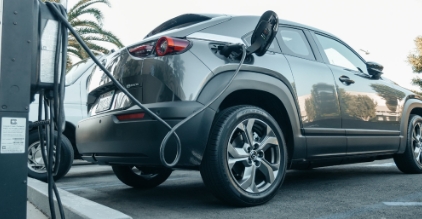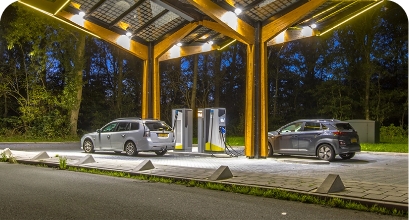.jpg)
In the rapidly evolving landscape of electric vehicles, the quest for efficient charging solutions has been a central concern for manufacturers and drivers alike.
A significant stride in this direction is the adoption of Tesla's North American Charging Standard (NACS) by major automakers, marking a revolutionary shift in the industry.
This article delves into the history, importance, recent developments, and the road ahead for NACS, exploring how it's becoming the preferred choice for the world's leading automotive brands.
#TeslaNACS #eVChargingReVolution #AutomakerCollaboration #ChargingInfrastructure
Tesla's NACS: A Standard Gaining Momentum
Tesla's Supercharger network, initially designed for its electric vehicles, has become a beacon of efficiency and user-friendliness. The North American Charging Standard (NACS) emerged as Tesla's response to industry fragmentation.
Recognising its potential, Tesla opened up NACS to other automakers, paving the way for a standardized and interoperable charging infrastructure.
Advantages of NACS Chargers:
Superior Ergonomics:
Tesla's connector boasts a smaller size and lighter cable compared to CCS connectors. This design makes it highly manoeuvrable and effortless to plug in, providing superior ergonomics for an enhanced charging experience.
Reliable Charging:
In the world of eV road trips, reliability is key. While CCS charging ports face operational challenges (with only 72.5% functionality according to a Bay Area study), Tesla's Supercharger network shines. A mere 4% of Tesla owners reported major difficulties, showcasing the superior reliability of NACS chargers.
More Charging Ports:
Quantity meets quality as Tesla's Supercharger network boasts almost twice as many public charging ports compared to those with CCS connectors. This extensive coverage ensures accessibility and convenience for Tesla eV owners, setting NACS chargers ahead in the charging port race.
Plug-and-Charge Capability:
Simplify your charging routine with plug-and-charge capability. Connecting your eV to a NACS charging station initiates the refuelling process without the need for credit cards or mobile apps. This seamless approach ensures an easy and streamlined charging experience for all users.
Compact Design:
NACS plugs are a paradigm shift with their smaller, lighter, and more compact design compared to CCS plugs. This makes them highly manoeuvrable, ensuring an effortless plugging experience for every eV owner.
User-Friendly Funnel Shape:
Designed like a funnel, the NACS connector adds a touch of user-friendly innovation. Plugging in becomes a breeze, simplifying the charging process and making it more accessible for all.
Button-Enabled Charging Port Latch:
Adding a cool factor, the Tesla connector comes equipped with a button on the handle that opens the charging port latch. This feature enhances convenience, making the entire charging experience seamless and efficient.
Increased Effort, Especially in Winter:
Plugging in a CCS connector may require more effort, especially during winter. The long, thick, and heavy cables associated with CCS connectors can pose challenges, making plugging difficult for some eV owners, notably in the UK.
Major Automakers Embrace NACS
Recent months witnessed a surge in NACS adoption by automotive giants like Toyota, Lexus, Hyundai, Kia, BMW, Ford, GM, Honda, Nissan, Volvo, Mercedes-Benz, and Rivian.
Implications and Challenges of NACS Adoption
While major automakers commit to incorporating NACS ports, questions arise about industry dynamics and equitable access to charging infrastructure. The emphasis could shift from charging accessibility to other crucial aspects like vehicle performance and pricing.
Infrastructure Woes and Collaborative Solutions
Recognising the challenges in eV charging infrastructure, automakers like Ford and General Motors have taken a collaborative approach. By licensing NACS ports from Tesla starting in 2025, they aim to overcome infrastructure hurdles and provide a seamless charging experience for their customers.
The Growing Ecosystem: Beyond Automakers
The transition to NACS extends beyond automakers, with public charging networks like ChargePoint aligning with this trend. ChargePoint plans to introduce NACS connector support for its AC and DC chargers, emphasising compatibility and standardisation in public charging infrastructure.
Conclusion:
Tesla's NACS adoption by major automakers signifies a significant step in addressing historical fragmentation in eV charging standards.
While promising standardised charging and improved accessibility, challenges arise in balancing Tesla's influence and ensuring fair access. Collaborative initiatives underscore the industry's determination to deliver a seamless charging experience for eV drivers.
As automakers align with Tesla's NACS, the industry propels toward a future of efficiency, interoperability, and accessibility in the eV charging ecosystem. The choices made today will undoubtedly shape the landscape of electric mobility in the future.

.jpg)
.jpg)
.jpg)















